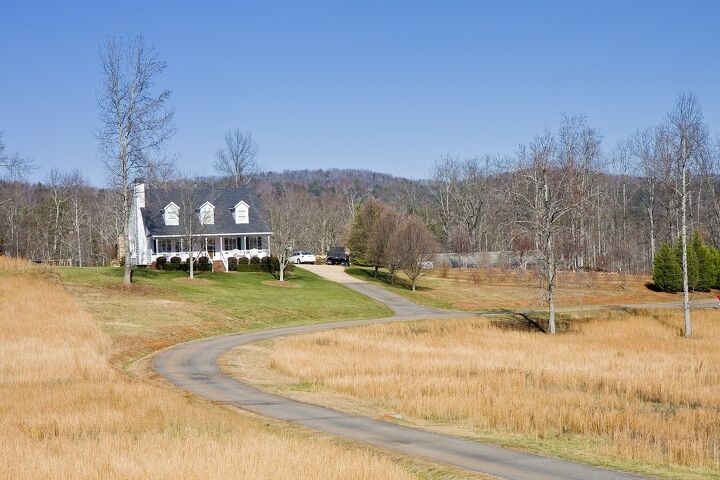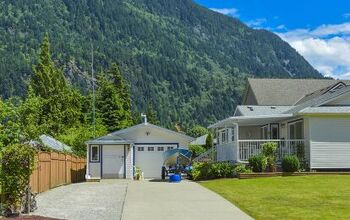How Close Can A Driveway Be To A Well? (Find Out Now!)

Recently, there was a tropical storm that hit my part of New Jersey. When it did, we had torrential rain that flooded the area. One of the areas was near a well, and wouldn’t you know it, the road nearby collapsed. As it turns out, both roads and driveways need to have a minimum distance from wells.
State requirements for distances from a well to a driveway vary, but it’s best to avoid placing a driveway within 25 feet of a drinking water well if possible. Wellheads can be put next to the driveway but, you should mark it to ensure that drivers don’t hit it.
Well water is one of the types of water sourcing that is starting to fade from America. It’s still popular enough, though, so if you want to stay safe, it’s good to understand how to position your well.
Do You Need a Brick and Stone Floor Contractor?
Get free, zero-commitment quotes from pro contractors near you.

Why Can’t You Have A Well Close To A Driveway?
There are several reasons why you shouldn’t have a well close to a driveway, and why you shouldn’t put a driveway over the well. These three reasons tell all the details as to why it’s not a good idea:
- It could turn into a sinkhole. Too much pressure over a well is a great way to make the ground shake and open underneath you. When you have a car parking over a giant gap of a well’s area underneath, you’re parking over empty space. This can potentially lead to your driveway collapsing.
- Putting a well close to a driveway can also lead to fines. Most states have building codes that banned putting wells within a certain distance of driveways. If your well doesn’t stick to building code, you will get fined and you’ll have to deal with a lot of issues with repairing it before you can live in your home.
- Oh, and let’s not forget that oil and other car-related exhausts can contaminate drinking water. Yes, wells are underground. They are meant to use the ground to filter out some of the impurities in the water, but that doesn’t mean it’s 100 percent effective. When you have a well near a driveway, the oil and gas from the cars eventually will find its way into your drinking water. That can cause health issues down the line.
Can You Put A Wellhead Near Your Driveway?
While you can’t have the actual well part near your driveway, you usually can find a way to add a wellhead near your driveway. This is the visible part of the well. Even though you can do this, it’s not a good idea. After all, your wellhead will still be exposed to toxic gases.
How Close Can A Driveway Be From The Well?
Driveways have to have a minimum of 10 feet of horizontal distance from a well, but that’s the bare minimum. Most jurisdictions will ask you to keep them a minimum of 25 feet away from each other. This is a suggestion that is made to minimize the chance of water contamination in the well.
How Can You Tell What The Minimum Distance Between Your Well And Driveway Should Be?
The easiest way to find out what the minimum distance between a well and a driveway should be is to check out your local building codes. The local codes will give you a good idea of the minimum distance. Of course, if you want to go further apart than what it suggests, no one will hate you for it.
Is Putting A Well Near Your Driveway Really That Dangerous?
No matter how you look at it, the answer is yes. Wells should not be near areas where you store gasoline, nor should they be in areas where motor oil could leak out. This absolutely will taint your water, and filters won’t always get rid of those contaminants. So, at the very least, you could be putting yourself at risk of gas poisoning your well water.
When you factor in the structural risk that comes with having a well interior too close to your driveway, it’s clear to see that the risks pose outweigh the benefits.
How Close Can You Put A Well Near Your House?
Putting a well near your home is not as dangerous as putting it near your driveway. Most building codes suggest giving at least three feet of space between the well and the buildings nearby. As you might expect, more space is always welcomed here.
Do You Need a Brick and Stone Floor Contractor?
Get free, zero-commitment quotes from pro contractors near you.

Related Questions
Is it safe to drink well water that isn’t filtered?
Well water might seem like something safe to drink if you have watched Disney movies, but it’s really not a smart idea to drink it without a filter. Though humanity has done it for centuries, it’s best to filter your water. Filtered water has less impurities, tastes better, and will not have the risk of bacterial/amoeba infections that “straight from the well” water has.
How many homes rely on well water in America?
While wells are not as common as they were in the past, around 13 percent of all Americans rely on them today. This roughly equates to 42 million people who have a household well as their primary source of water. Though this is still fairly high, many homes are beginning to switch from well water to municipal plumbing. So, this number is expected to shrink.
Should you cover the wellhead?
You should not fully cover the wellhead of your well, even if it is an eyesore. A covering can encourage the growth of fungi, bacteria, and other contaminants. If a vacuum starts to occur as a result of the covering, the wellhead will begin to suck contaminants into your well water.If you are really worried about the appearance of your wellhead, your best bet is to try to hide it. A bunch of bushes, a rock outcropping, and even hiding it behind trees can all work well here. Even using a small (ventilated) hut can sometimes work out well as long as you find ways to prevent mold growth inside of it.

Ossiana Tepfenhart is an expert writer, focusing on interior design and general home tips. Writing is her life, and it's what she does best. Her interests include art and real estate investments.
More by Ossiana Tepfenhart















![10 Most Dangerous Neighborhoods in Baltimore [Updated]](https://cdn-fastly.upgradedhome.com/media/2023/07/31/9075655/10-most-dangerous-neighborhoods-in-baltimore-updated.jpg?size=350x220)











